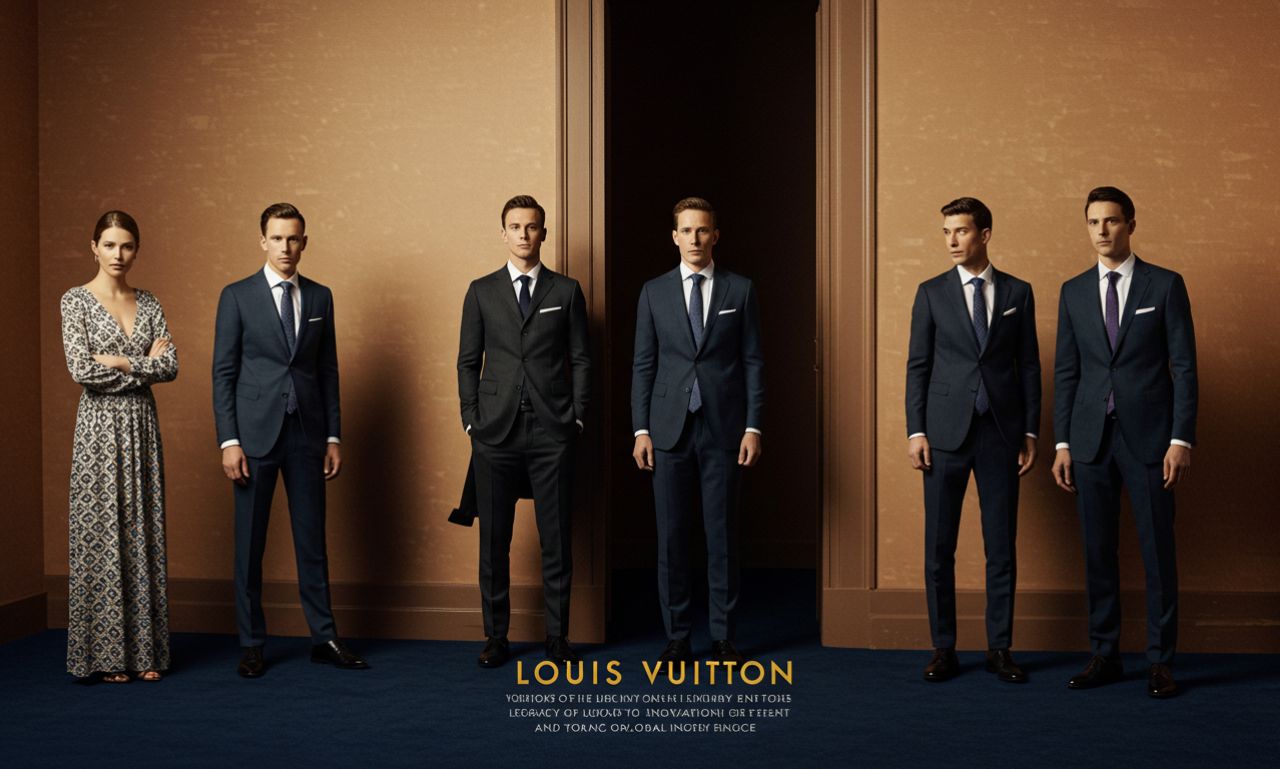In the world of luxury fashion, Louis Vuitton stands as a name synonymous with prestige, craftsmanship, and timeless style. Founded in 1854 in Paris, the brand has grown into a global powerhouse, combining heritage with modern innovation. What began as a small luggage-making workshop is today a multi-billion-dollar empire with influence spanning fashion, art, travel, and popular culture.
LouisVuitton is not just a brand—it is a cultural phenomenon that continues to shape the definition of luxury in the 21st century.
The Early Beginnings of Louis Vuitton
The founder, LouisVuitton Malletier, was born in France in 1821. At just 16 years old, he moved to Paris and apprenticed as a box-maker and packer, crafting durable containers for travelers and high society. This early training gave him the skills and vision to launch his own brand.
-
In 1854, Vuitton opened his first store in Paris.
-
He introduced the flat-topped trunk design, which was lighter, durable, and stackable—perfect for long voyages.
-
Unlike rounded trunks of the time, his flat-topped creations revolutionized luxury travel and attracted an elite clientele.
The success of these trunks marked the foundation of LouisVuitton as a brand built on practicality, elegance, and innovation.
The Birth of the LV Monogram
By 1896, LouisVuitton’s son, Georges Vuitton, took over and introduced the now-iconic LV monogram canvas.
-
Design Inspiration – The interlocking “L” and “V” letters, surrounded by floral motifs, symbolized French artistry and sophistication.
-
Brand Protection – The unique design served as an early form of intellectual property protection against counterfeiters.
-
Cultural Icon – Over time, the monogram evolved from a logo to a status symbol recognized worldwide.
The LV monogram remains one of the most powerful brand symbols in fashion history.
Louis Vuitton’s Expansion into Fashion and Beyond
For over a century, LouisVuitton remained known primarily for its trunks and luggage. However, the 1990s marked a turning point.
-
In 1997, Marc Jacobs became the first-ever creative director of LouisVuitton.
-
He expanded the house into ready-to-wear clothing, shoes, jewelry, and accessories, positioning the brand as a complete luxury lifestyle label.
-
Collaborations with artists like Takashi Murakami (who created the colorful LV monogram) and Stephen Sprouse (who introduced graffiti-inspired designs) brought fresh energy to the brand.
This evolution ensured LouiVuitton appealed to both traditional luxury buyers and younger, trend-driven audiences.
Louis Vuitton in Pop Culture and Media
Louis Vuitton is not just a fashion brand; it is a cultural reference point.
-
Celebrities and Ambassadors – From Rihanna, Angelina Jolie, and Emma Stone to BTS, high-profile figures consistently represent the brand.
-
Music and Art – The LV logo is often referenced in songs and artwork, representing wealth, luxury, and aspiration.
-
Exhibitions – The Fondation LouisVuitton Museum in Paris showcases art, culture, and design, cementing the brand’s ties to creativity.
Through these cultural ties, LouisVuitton remains relevant across generations and demographics.
Craftsmanship and Innovation
One of the key reasons LouisVuitton has sustained its dominance is its commitment to craftsmanship.
-
Handmade Excellence – Many items are still carefully handcrafted by skilled artisans, maintaining the house’s high standards.
-
Materials – The use of fine leathers, treated canvas, and unique textiles ensures durability and exclusivity.
-
Innovation – From waterproof trunks in the 19th century to collaborations with digital fashion brands today, LouisVuitton has always embraced innovation.
This balance of tradition and forward-thinking design ensures the brand’s global appeal.
Business and Global Expansion
Louis Vuitton is part of the LVMH Group (Moët Hennessy Louis Vuitton), the largest luxury conglomerate in the world.
-
Revenue Leadership – Consistently ranked as one of the most valuable luxury brands, worth billions annually.
-
Global Presence – Louis Vuitton operates over 460 stores worldwide, from Paris to Tokyo to New York.
-
Customer Base – Appeals to both ultra-high-net-worth individuals and aspirational consumers.
Its ability to maintain exclusivity while reaching a global audience sets Louis Vuitton apart from competitors.
Sustainability Efforts and the Future
In recent years, Louis Vuitton has turned its attention to sustainability and environmental responsibility.
-
Eco-Design Initiatives – Using sustainable materials and eco-friendly packaging.
-
Repair Workshops – Encouraging customers to repair and extend the life of their products rather than replacing them.
-
Carbon Reduction – Working toward reducing emissions across its supply chain.
By embracing eco-conscious practices, Louis Vuitton ensures it remains relevant in a world that demands both luxury and responsibility.
Why Louis Vuitton Remains a Symbol of Luxury
Louis Vuitton continues to dominate the luxury industry because of:
-
Heritage and Prestige – A history dating back to 1854.
-
Innovation – Constant reinvention of classic styles.
-
Exclusivity – Products are limited and associated with status.
-
Cultural Influence – A brand embedded in music, art, and celebrity culture.
-
Global Reach – A name recognized on every continent.
This unique combination makes Louis Vuitton more than just a brand—it is a symbol of aspiration and achievement.
Conclusion
From its origins as a small luggage workshop in Paris to becoming the world’s leading luxury brand, Louis Vuitton has remained true to its core values: craftsmanship, innovation, and elegance. Its iconic monogram, artistic collaborations, cultural presence, and commitment to quality have ensured its place at the top of the luxury fashion hierarchy.
As the future of fashion moves toward sustainability and digital innovation, Louis Vuitton continues to lead with a blend of tradition and modernity. It is not just a label; it is a global symbol of timeless luxury and cultural influence.

